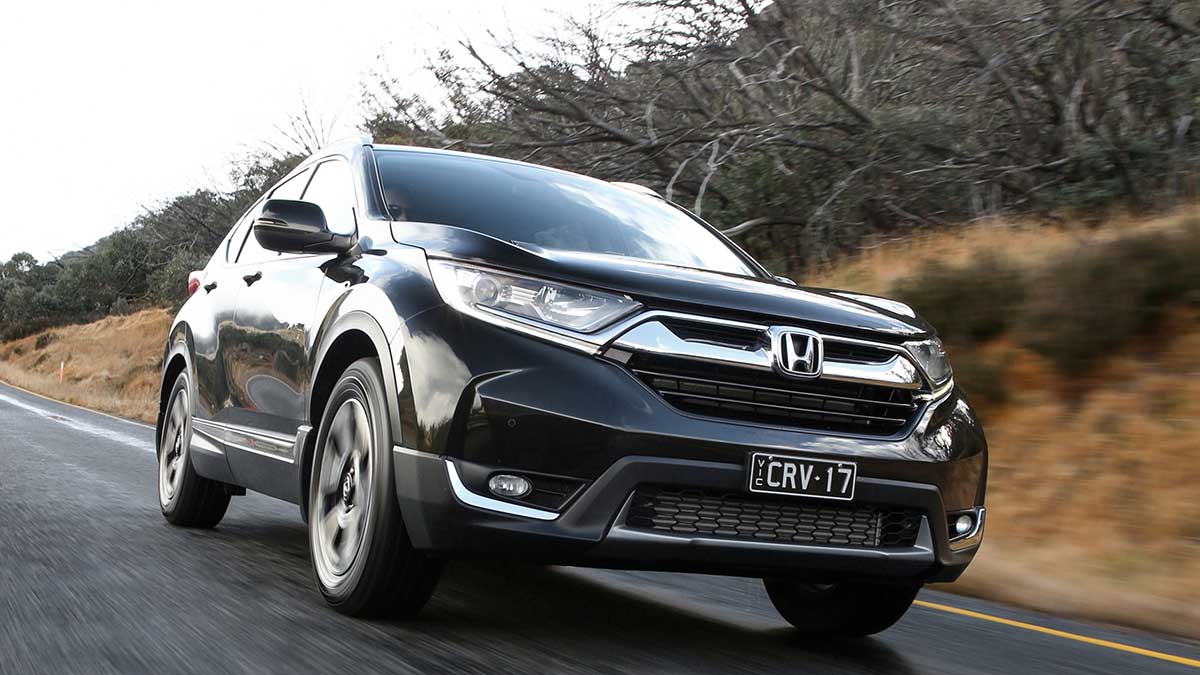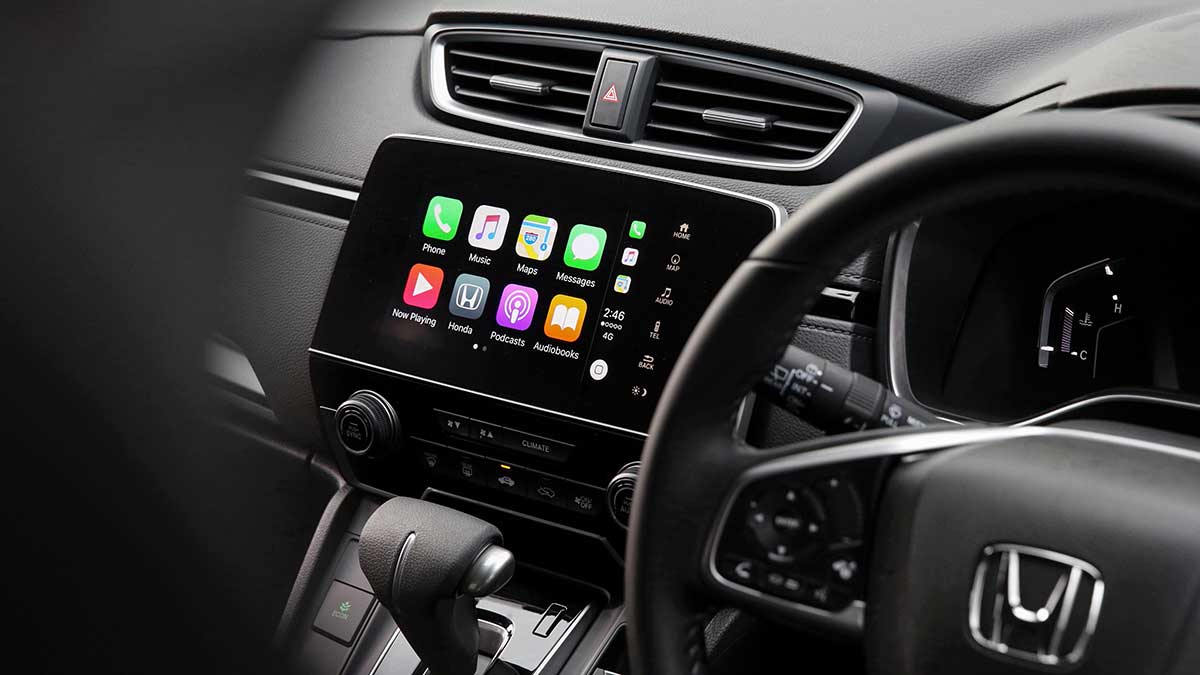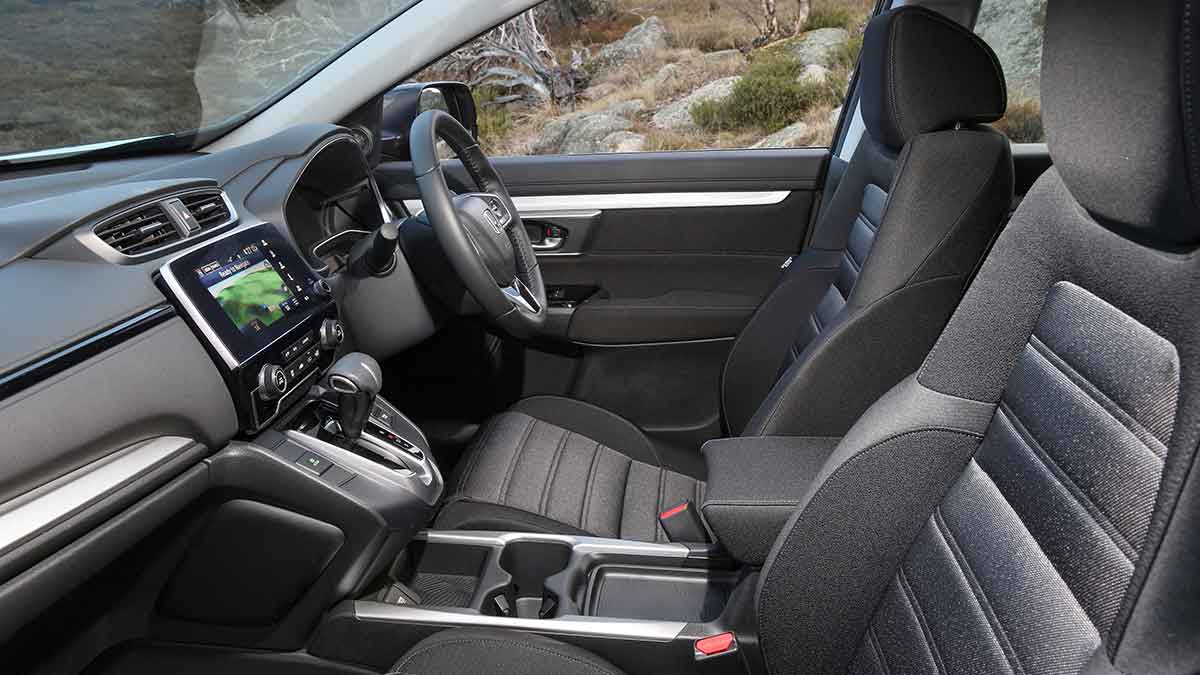The Foton Tunland joins Australia's dual-cab ute market as an affordable mild-hybrid diesel under $50,000, offering strong capability against tough competition.
Honda CR-V 2017 review

Leaving panache to the show ponies, Honda’s new CR-V is all about making sense to the family buyer. Not that it doesn’t look good and drive beautifully.
There is a sharp dynamic look to the all-new Honda CR-V body architecture, a sense of nicely proportioned style that thankfully also carries through to the smart interior presentation. It’s a good place to start an evaluation of this Honda, because the development work has focused on the user-friendly cabin features as much as the refreshingly stylish presentation.
Medium-size SUVs are designed to target family practicality, and the 2017 CR-V takes this to a new level with well-thought-out features. Stretched slightly in overall external dimensions, including a 40mm-longer wheelbase, the interior is now cavernous, easy to access and for the most part thoughtfully engineered.
Starting from the back, there’s a power tailgate that can be easily programmed using the closure button and set to any desired opening – ideal in low garages or confined carparks. The load area is well lit, there are levers inside the tailgate to remotely fold the 60/40-split back seat, the floor is firm and flat right through to the front seats and the floor height is low for easy loading or pet access with no internal load lip. And other manufacturers take note, there’s a full-size alloy spare wheel underneath, in all models including the seven-seater!
Rear-seat passengers are also notably well catered for, with ample leg and head room, even for larger adults, and access is a breeze with rear doors that open to 90 degrees. Features include rear-seat air vents, overhead lighting and two USB charging points for accessories or games. Rear-seat comfort for adults is also enhanced by the ability to slide your feet under the front seat so your legs rest fully on the seat cushion, but width-wise it’s still a little tight for three.
The wide rear-door opening helps when dealing with children and child seats, with the bonus of superior ISOFIX anchorages, but the top tether points are poorly positioned in the roof panel. This is less of an issue with our five-seat VTi-S test car but totally impractical in the new seven-seater, as the child seat would put a strap and a hazardous metal mounting bracket directly above a child sitting in the third row. The seven-seat version, available in VTi-L spec only, results in a higher load floor and the second-row seats slide (by up to 150mm) to allow for third-row passengers. It provides extra overhead ventilation for all rear occupants.
Smart and comfortable
Up front the new CR-V is a model of smart design and clean presentation, complemented by good seat comfort and support. There is an upmarket feel in the choice of trim materials and soft-touch coverings on most surfaces, including a tactile steering wheel with audio and cruise controls. Drivers of the VTi-S have manually operated seat and steering-wheel adjustment, a clear digital speedo, trip computer and primary gauges in front and a large centre screen for all secondary functions. Thankfully, rapidly required actions such as demisting and heating are not buried in the touchscreen, remaining separate and easy to regulate.
Honda continues to employ the neat auto gear-selector binnacle that drops down from the centre dash and appears to float above a long centre console, enhancing the driver-orientated/cockpit feel. Despite this good proximity of controls, the cabin still feels open, thanks to a low dash height and slimmer A-pillars, which in conjunction with a standard reversing camera and Honda’s unique kerb-side camera ensures good all-round vision. There are also front and rear parking sensors.
From a security point of view, the CR-V includes a walk-away lock function should the driver forget, in addition to the convenience of remote keyless entry on all models.
All CR-Vs have a five-star ANCAP safety rating and come with six airbags, driver-attention monitoring, tyre-pressure monitoring and trailer stability assist. And note that the suspect Takata airbag is no longer fitted to any new Honda. Honda's “sensing suite” of driver-assist technologies, such as adaptive cruise control, lane departure and autonomous emergency braking, are only available on the top-spec VTi-LX.
Better performance
Our recorded figures support the overall feeling of better all-round performance in this new CR-V and there is very little annoyance from slurring or whine from the CVT under full passing acceleration. Fuel economy over our test week was surprisingly aligned with the government figure of 7.3L/100km, although we did more highway kilometres than usual. The two-wheel-drive VTi-S riding on 235/60 18-inch tyres and aided by fluid-filled suspension bushes provided good ride quality over all types of roads. The electric power steering is nicely weighted for both town and country, and the high-riding body on strut-type front and multi-link rear suspension delivers notably well-controlled handling. Ground clearance on two-wheel-drive models has been raised by 28mm and on four-wheel-drive models by 38mm, adding a little more to CR-V’s modest adventuring capability.
One of the best attributes of this CR-V line-up is the high level of presentation and build quality across the range. Good design features and smart presentation are found in all variants. Pricing kicks off at $30,690 plus on-road costs for the VTi model, which includes dual-zone climate control, an eight-speaker audio system with Apple Car Play and Android Auto, 17-inch alloy wheels, fog lights and active noise control.
Our two-wheel-drive VTi-S test car is from $32,290, or $35,490 in all-wheel-drive. It adds a powered tailgate, satellite navigation, dusk-sensing headlights, lane watch and 18-inch alloys. VTi-L is a seven-seat two-wheel-drive model only, priced from $38,990, and adds a panoramic sunroof, leather-appointed trim, heated electric front seats with lumbar support and rain-sensing wipers.
Top of the range VTi-LX is all-wheel drive only, and it gains Honda’s driver assistance technology plus LED active cornering lights, digital radio, privacy glass and auto-dimming rear-view mirror for $44,290.
Hondas are now covered by a five-year warranty, while the new equipment and base pricing adjustment effectively means added value to the tune of $2100 to $5800 across the model range.
The verdict
Honda has revitalised its popular mid-size SUV, adding thoughtful design features to its generous space and practicality. Traditionally high build quality is now enhanced by CR-V’s sharp presentation and improved driving dynamics, which overall place it in class leadership contention.
These comments are from RACV's experienced team of vehicle testers.
|
Pricing |
$33,290 + $4054 (est) ORC. Premium paint – no cost. Model range $30,690-$44,290. |
|---|---|
|
Safety |
ESC. ABS. 6 airbags. Reversing camera. Front/rear park sensors. Driver-alert and lane-departure warnings. Auto lights. Tyre-pressure monitor. |
|
Connectivity |
7” touch-screen. Sat-nav. Apple CarPlay. Android Auto. 4 x USB, 1 x HDMI inputs. Bluetooth. |
|
Vehicle features |
Dual-zone climate control. Cloth seats. Roof rails. Auto tailgate. |
|
Driver features |
Fully adjustable steering column. Keyless entry/start. Electric folding side mirrors. |
|
Specifications |
Drivetrain: 1498cc, 4cyl turbo-petrol engine. Front-wheel drive. CVT. 140kW@ 5600rpm, 240Nm@2000rpm.
Performance: 0-60km/h, 4.2sec. 0-80, 6.1. 0-100, 8.7. 50-80, 3.8. 60-100, 5.5. 0-400m, 16.4. Stopping from 80km/h, 22.6m.
Fuel: 7.4L/100km (RACV test); 7.3L/100km (govt test). 57L tank. 91-RON petrol.
Wheels: 18” alloy, 235/60 R18 tyres. Full-size alloy spare. Towing limits: 1500kg, 100kg towball load. |
|
Service/repairs |
12-month/15,000km services. 5yr/100,000km warranty |
|
Category ratings |
Pricing: 4.0 Features & equipment: 4.0 Presentation: 4.5 Seating comfort: 4.5 Space: 5.0 Noise: 4.0 Performance: 4.0 Economy: 4.0 |





